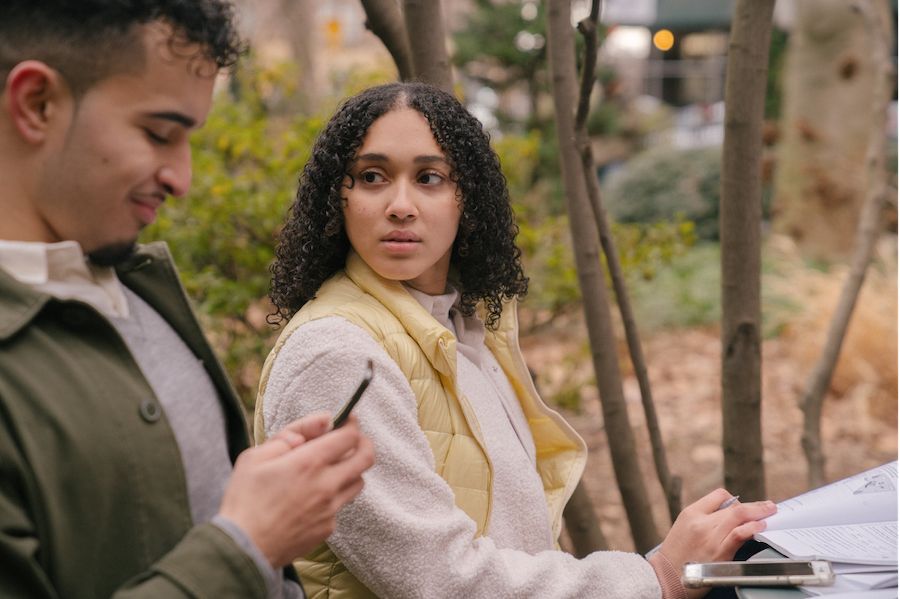Racial ambiguity means that it’s hard to tell someone’s race just by looking at them. This is important because it shows that race isn’t always clear-cut based on appearance alone. People who are racially ambiguous often deal with being mistaken for a different race, being stereotyped, and facing discrimination because others can’t easily classify them by race. It’s essential to understand the experiences of racially ambiguous people because there are more of them in the U.S. now, and their lives help us see that racial identity is more complicated than we might think. This also tells us that we might need to rethink how we categorize race in our society as it changes.
History of racial ambiguity
In the United States, many people have mixed racial backgrounds, making it hard to tell their race just by looking at them. The racial and ethnic makeup of the country keeps changing because of differences in how many babies different groups have and because of people moving here from other countries. In the U.S., we tend to judge people’s race based on how they look. This can cause problems for those who don’t fit into a clear racial category because they might be mistaken for a different race, treated based on stereotypes, or discriminated against.
Challenges Faced by Racially Ambiguous People
Racially ambiguous people often get mistaken for a different race by others. This can lead to hurtful comments and small acts of discrimination based on their appearance. Because there isn’t a clear label for their racial identity that everyone agrees on, it can make social interactions tricky. In the U.S., where race is often judged by how someone looks, this can cause confusion and reactions from others. It’s a reminder that race still plays a big role in how people interact with each other every day.
The impact of racial ambiguity on identity development
Creating a strong and healthy sense of racial identity can be tough because of how race is understood and talked about in the United States. While it’s seen as crucial for young people of color to figure out who they are racially, it’s also really tricky because of the social and emotional challenges that come with identifying with a particular racial or ethnic group. Building a racial identity involves becoming aware of your race, how you feel about it, what you like or prefer, and how you fit into racial groups around you. But it’s made harder by things like believing negative things about your own race, seeing bad images or stereotypes, and dealing with racism from others.
The role of racial ambiguity in multicultural counseling
Counselors should think about how racially ambiguous clients might have different struggles because of their mixed racial backgrounds. These people often get mistaken for a different race by others, which can result in special kinds of hurtful comments and a feeling of not fitting neatly into any specific racial group. It could be useful for counselors to use critical race theory to study the experiences of racially ambiguous people.
Challenges in Daily Life

Racially ambiguous people often face challenges in their daily lives:
- They’re frequently misidentified because their appearance doesn’t match common racial stereotypes.
- This misidentification can lead to unique forms of discrimination and a lack of recognition for their racial identity, affecting how they interact socially.
- They may encounter stereotypes and discrimination based on how they look.
- Developing a clear sense of racial identity can be tough due to the complexities of how race is understood in society.
- Racially ambiguous people of color may have specific mental health needs due to their experiences with misidentification, stereotyping, and discrimination.
- Racially ambiguous person might not fit neatly into predefined racial categories, making it hard for them to feel like they belong.
- Their unique racial identity can affect how they interact with others on a personal level.
- Figuring out their own racial identity can be a challenge because it’s not always obvious based on their appearance.
Racial Ambiguity and Bi-Racial Identity
| Distinction | Racial Ambiguity | Biracial Identity |
| Definition | Individuals whose racial background is not easily identifiable based on their physical appearance | easily identifiable based on their physical appearance Individuals with parents from two different racial or ethnic groups |
| Physical Appearance | Appearance does not align with pre existing ideas of race | Appearance reflects a combination of two distinct racial or ethnic groups |
| Identity | May struggle with developing a strong, healthy racial identity due to the paradoxes and contradictions of the social construction of race in the U.S. | May identify with both of their parents’ racial backgrounds or may choose a singular racial identity |
| Misidentification | Frequently misidentified racially by others due to not resembling the phenotype associated with a specific racial group or belonging to racial/ethnic groups originating in different parts of the world that resemble each other | May be misidentified due to their appearance not aligning with preexisting ideas of race |
| Challenges | Unique challenges include misidentification, social interactions, stereotyping, identity development, mental health, social categorization, interpersonal dynamics, and self-identity | Unique challenges include navigating the complexities of dual racial identities, potential rejection from both racial groups, and the need to develop a strong, healthy racial identity |
| Examples | Individuals with diverse ethnic backgrounds or those who do not resemble any distinctive racial group | Individuals with parents from two different racial or ethnic groups, such as Black and White, Asian and White, or Hispanic and Black |
Popular Racially Ambiguous Figures
Popular racially ambiguous figures in Hollywood include:
– Wentworth Miller (Prison Break)
– Giancarlo Esposito (Breaking Bad/Better Call Saul)
– The Rock (Dwayne Johnson)
– Vin Diesel
– Alfred Molina
– Keegan-Michael Key
– Fred Armisen
– Rob Schneider
– Alan Rickman
– Robert Downey Jr.
– Kirk Lazarus (Chris Hemsworth in “In the Heart of the Sea”)
– Anthony Quinn
– Zoe Saldana
– Rashida Jones
– Oscar Issac
– Ben Kingsley
– Jason Mantzoukas
– Forest Whitaker
– Taika Waititi
Popular racially ambiguous figures in politics include:
– Barack Obama
– Kamala Harris
– Hakeem Jeffries
– Eric Garcetti
– Andrew Yang
– Meghan Markle
Popular racially ambiguous figures in sports:
– Tiger Woods (Golf)
– Colin Kaepernick (Football)
– Russell Wilson (Football)
– Blake Griffin (Basketball)
– Jeremy Lin (Basketball)
– Hines Ward (Football)
The future of racial ambiguity
The future of being racially ambiguous is connected to how diverse the U.S. population is becoming and the rising amount of relationships between people of different races and ethnicities. As the U.S. gets more diverse, there will probably be more people who are racially ambiguous. This shows why it’s important to keep studying the experiences of racially ambiguous people of color because not much research has been done on this topic yet.




